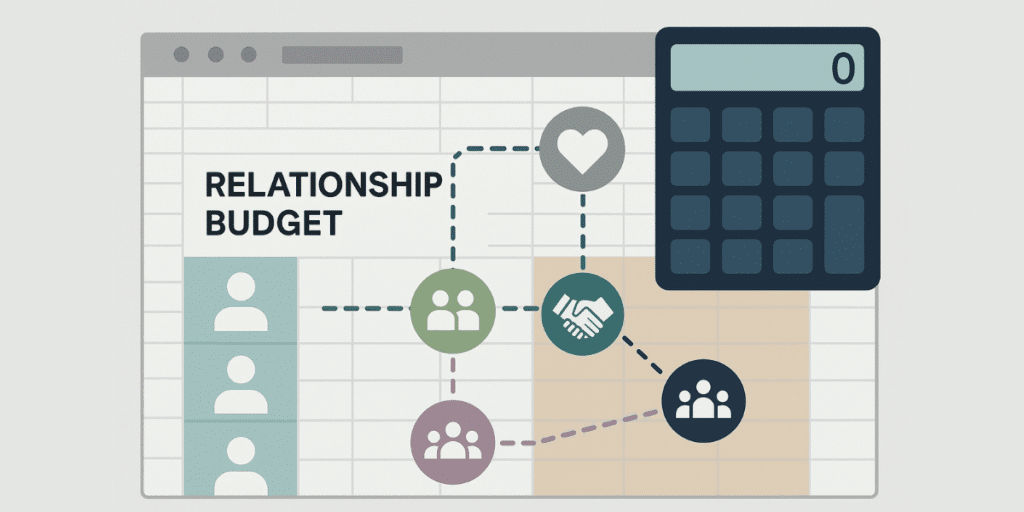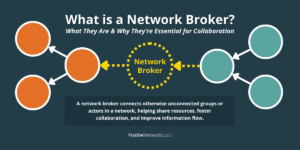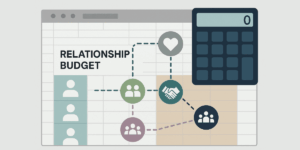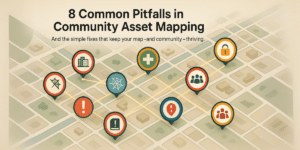Public health departments. Nonprofits. Foundations. City agencies. Whatever your mission, building and managing partnerships is central to making an impact. But in today’s climate of shrinking budgets, increased demand, and stretched teams, maintaining those partnerships can feel overwhelming.
At Visible Network Labs, we call this your “relationship budget.” Just like financial resources, your capacity for partnerships is finite—and how you spend it matters.
So how do you stay connected and collaborative without burning out or overextending? In this post, we’ll explore how to stretch your relationship budget wisely, maintain high-value connections, and avoid diminishing returns from over-networking. Plus, we’ll give you a free tool to help you assess and plan your relationship strategy in lean times.
What is a “Relationship Budget”?
Your relationship budget includes all the time, staff effort, energy, and financial resources your organization can invest in building, managing, and sustaining partnerships. Every additional meeting, survey, workgroup, or MOU is a “spend.” If you’re not strategic, you can end up with overloaded calendars, burnt-out staff, and partnerships that don’t serve your goals.
When everything is a priority, nothing is. Stretching your relationship budget means making smarter choices—not just more of them.
🔗 Network Insight: Our research shows that more connections or greater involvement don’t necessarily result in better outcomes. In fact, “over-networking” can lead to diminishing returns. The key is right-sizing: choosing the right partners and the right level of engagement for your context.
3 Ways to Stretch Your Relationship Budget
1. Rotate Roles Instead of Expanding Meetings
Instead of inviting everyone to everything, rotate roles strategically. Identify “core” partners who consistently lead or coordinate efforts and rotate “peripheral” roles for those who contribute occasionally. This maintains connection without overwhelming members.
🎯 Try this: Use your next agenda to ask: “Who needs to be at the table for this conversation?” Everyone else gets the notes—and their bandwidth back.
💡 PARTNER CPRM helps visualize these roles within your network and track involvement over time, so you can see where engagement is strong—and where it’s just noise.
2. Optimize Partner Value, Not Just Headcount
Not every partner needs to give everything. One might bring data, another political capital, another community trust. Use a framework like Power–Influence–Resource–Time to clarify value, expectations, and capacity.
🔎 A recent client used our PARTNER platform to reveal they were “over-partnering” in certain areas while under-leveraging others. With this insight, they rebalanced roles and increased impact with fewer demands on their network.
💬 As Dr. Hodgens from the Glasser/Schoenbaum Human Services Center put it:
“Finally, everyone—Funders, nonprofits, and donors can now see where support is flowing—and where it’s missing. We can focus instead of guessing.”
Dr. Kameron Hodgens, Glasser/Schoenbaum Human Services Center
3. Measure Involvement and Plan for Diminishing Returns
It’s tempting to “just add one more partner” when facing complex challenges. But every new connection dilutes your bandwidth. Instead, use involvement data to assess which partnerships are driving value—and which are just adding weight.
📊 The Level of Member Involvement data in PARTNER CPRM provides benchmarks and diagnostics to help you answer:
Are we asking too much from too many?
Could some involvement be rotated or scaled back?
What’s the minimum effective level of engagement?
🔧 Pro tip: When capacity is tight, lean into your network’s trusted, high-value connections. They’re the backbone of your system.
Download the Free Relationship Budget Calculator
If you’re facing staff turnover, shrinking grants, or growing coalitions, don’t just work harder—work smarter.
🧮 Our free Relationship Budget Calculator helps you:
Audit how much time and effort you’re spending on relationships
Prioritize partners by strategic value and available capacity
Identify places to rotate roles, reduce duplication, or shift engagement
Book a Free 20-Minute Demo of PARTNER CPRM
Want to take it further? Our PARTNER platform lets you track relationships, map your ecosystem, and assess trust and value across your network—so you can make data-informed decisions even in lean times.
🚀 Schedule your 20-min demo and see how network science can help you right-size your relationship budget and do more with less.
Visible Network Labs is here to help you build smarter, more strategic networks—no matter your capacity. Let’s work together to turn limited resources into lasting impact.






